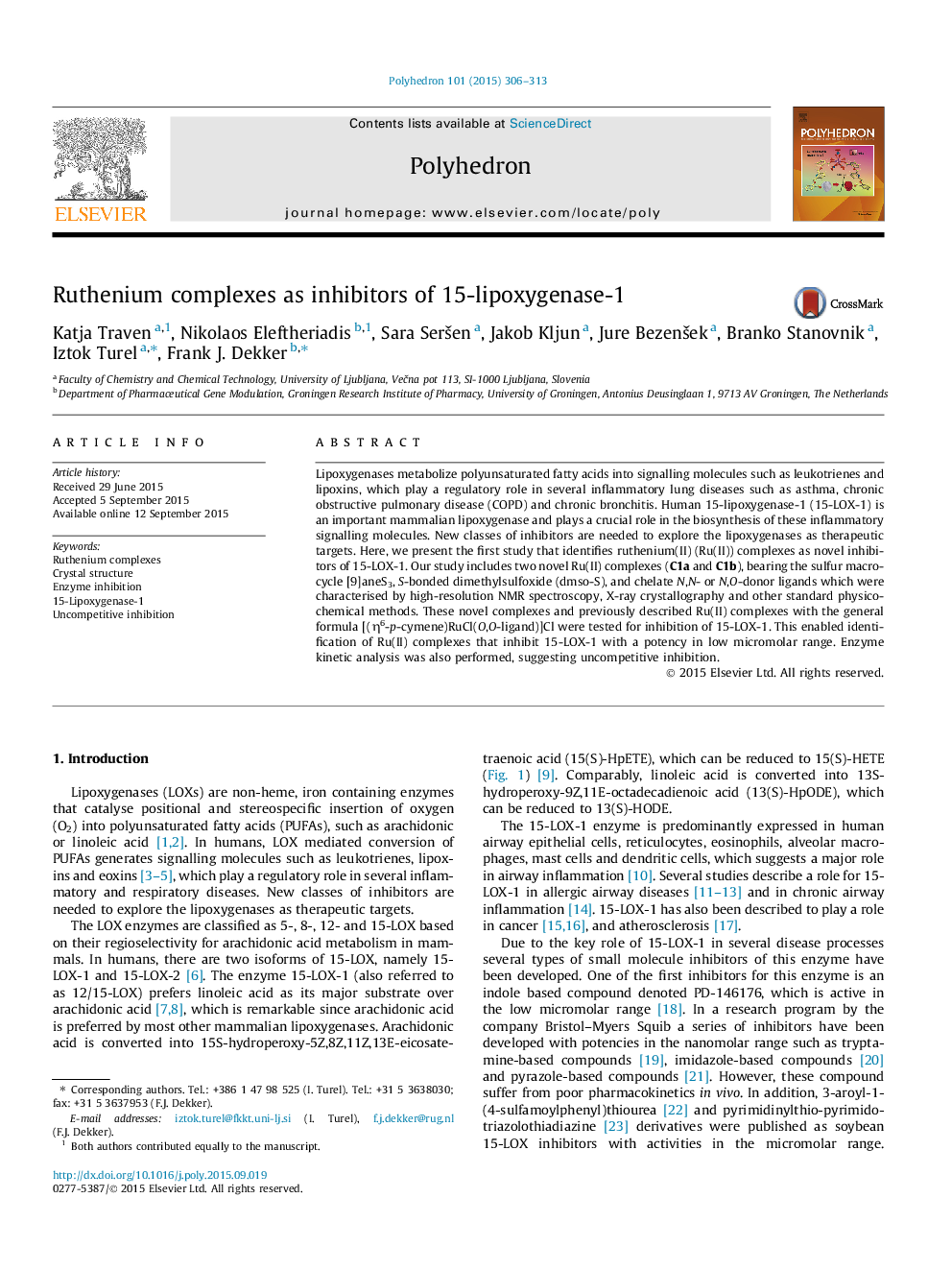| Article ID | Journal | Published Year | Pages | File Type |
|---|---|---|---|---|
| 1336849 | Polyhedron | 2015 | 8 Pages |
Lipoxygenases metabolize polyunsaturated fatty acids into signalling molecules such as leukotrienes and lipoxins, which play a regulatory role in several inflammatory lung diseases such as asthma, chronic obstructive pulmonary disease (COPD) and chronic bronchitis. Human 15-lipoxygenase-1 (15-LOX-1) is an important mammalian lipoxygenase and plays a crucial role in the biosynthesis of these inflammatory signalling molecules. New classes of inhibitors are needed to explore the lipoxygenases as therapeutic targets. Here, we present the first study that identifies ruthenium(II) (Ru(II)) complexes as novel inhibitors of 15-LOX-1. Our study includes two novel Ru(II) complexes (C1a and C1b), bearing the sulfur macrocycle [9]aneS3, S-bonded dimethylsulfoxide (dmso-S), and chelate N,N- or N,O-donor ligands which were characterised by high-resolution NMR spectroscopy, X-ray crystallography and other standard physicochemical methods. These novel complexes and previously described Ru(II) complexes with the general formula [(η6-p-cymene)RuCl(O,O-ligand)]Cl were tested for inhibition of 15-LOX-1. This enabled identification of Ru(II) complexes that inhibit 15-LOX-1 with a potency in low micromolar range. Enzyme kinetic analysis was also performed, suggesting uncompetitive inhibition.
Graphical abstractLipoxygenases metabolize polyunsaturated fatty acids into signalling molecules that play a regulatory role in several inflammatory diseases. Here we describe ruthenium(II) (Ru(II)) complexes as novel inhibitors of the enzyme 15-LOX-1 inhibit via uncompetitive binding to the substrate bound enzyme.Figure optionsDownload full-size imageDownload as PowerPoint slide
